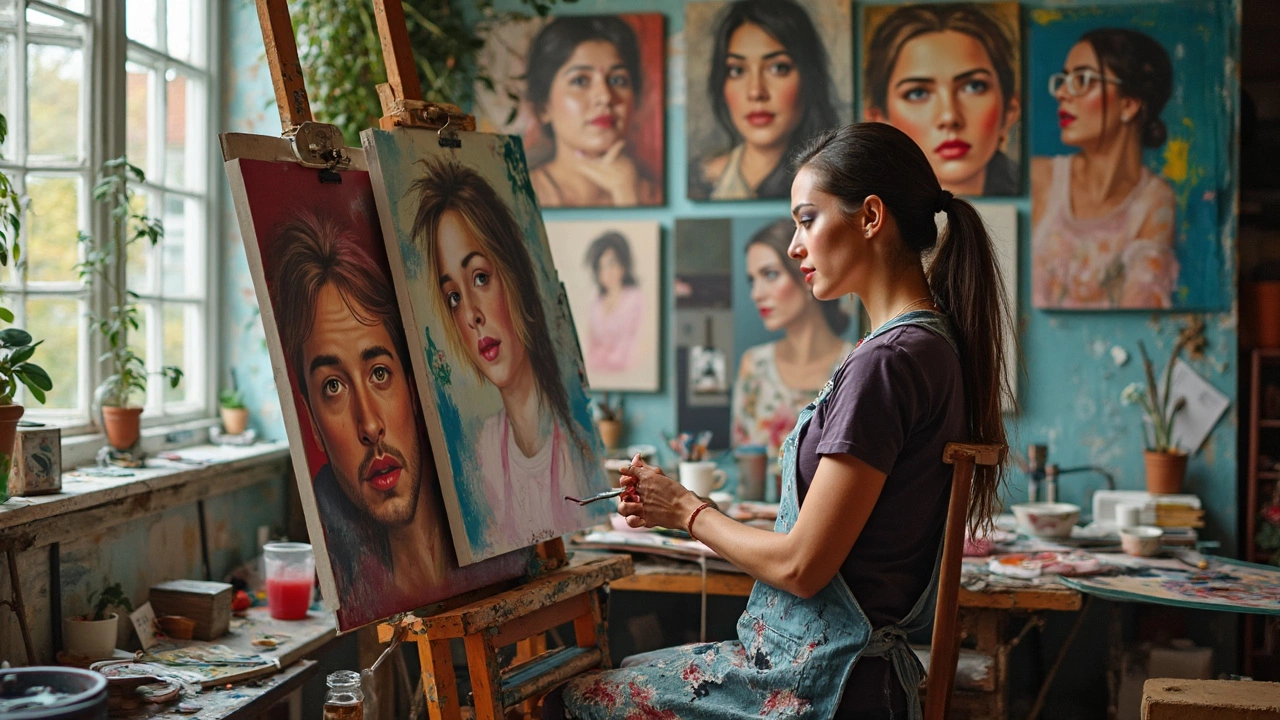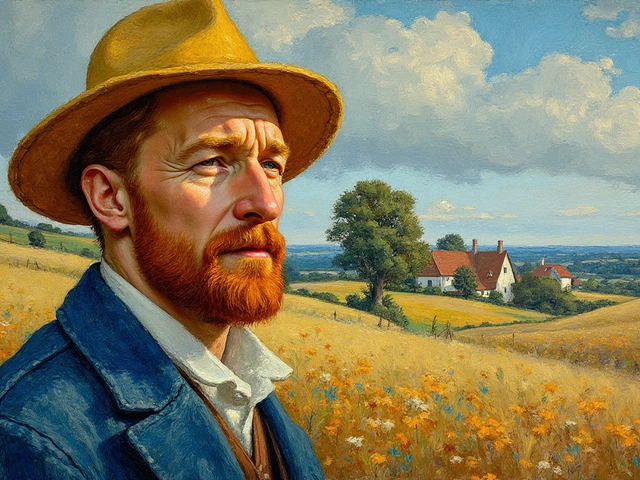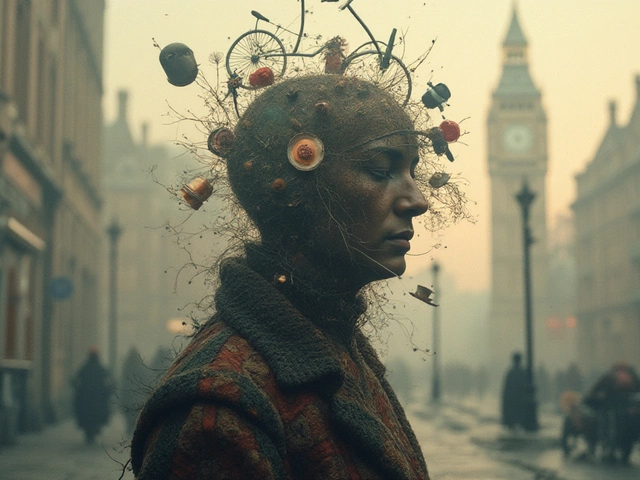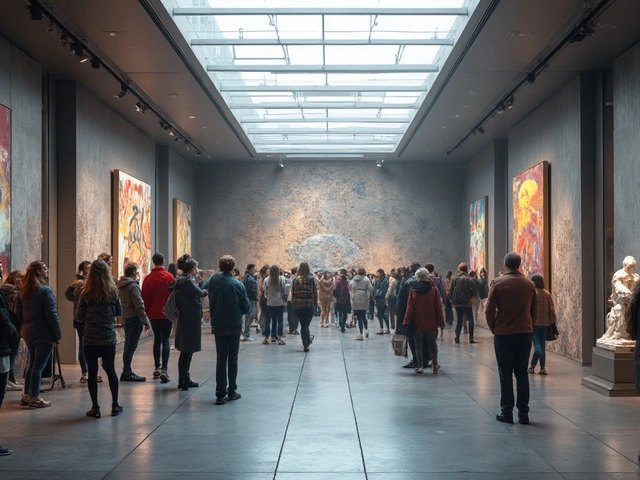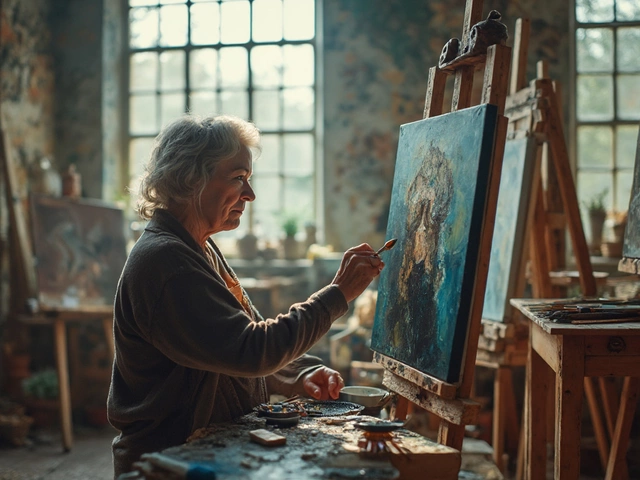If every portrait you make ends up looking like a yearbook photo, you’re not alone. The good news? There are simple hacks to add real spark to your work.
Start by thinking about the lighting. Natural light from a north-facing window or a dramatic lamp can totally change the mood. Instead of facing your subject straight on, turn them slightly and watch what the shadows do on their face—it makes things way more interesting, even before you pick up your brush.
Another quick fix: don’t stick to perfect skin tones or safe colors. Try exaggerating certain features with bolder hues, or step up the contrast between light and dark areas for more drama. Sometimes I’ll throw in a blue or magenta highlight because, weirdly, it just works. The next time you look at an old master painting, check out how much they play with color and shadows. You can get away with way more than you think.
- Choose Compelling Lighting
- Play With Color and Contrast
- Break the Rules of Composition
- Add Unexpected Details or Textures
- Capture Real Personality
- Keep Experimenting and Learning
Choose Compelling Lighting
If you want your portrait painting to stand out, lighting is the fastest route there. Honestly, the right lighting can turn a regular face into something people can’t stop looking at. It’s not just about making your subject visible—it’s about telling a story or setting a vibe.
The classic go-to for a reason is natural light. North-facing windows give you soft, stable daylight that won’t shift every ten minutes. That’s why so many studios are built with big north windows. But window light isn’t your only option. Try side lighting—a lamp on one side of the face—to create sharp shadow and highlight, which literally adds more dimension to the painting. It’s the trick that makes cheekbones pop and eyes look deeper.
- Rembrandt lighting: You’ve probably seen it in old master paintings—look for a triangle of light under the eye on the shadow side of the face. It’s subtle but makes portraits way more dynamic.
- Split lighting: Put your light source directly to one side so half the face is lit, half in shadow. This looks really striking and bold.
- Backlighting: Pop a light behind your subject to get a glowing outline around the head or shoulders. It makes the figure stand out from the background, especially if you keep the background darker.
Don’t be afraid to combine light sources, either. Sometimes a mix of natural daylight and a lamp gets the most interesting effect. If you can, take quick test photos before you paint—different lighting setups can totally change the atmosphere.
For anyone serious about portrait painting, experimenting with lighting is key. I know artists who go all out, using cheap clamp lights from the hardware store and bending cardboard for DIY reflectors. You don’t need a fancy studio to find what works—just play around. You’ll know when the lighting clicks because the face will almost paint itself.
Here’s a simple table showing how different lighting setups can impact your painting:
| Lighting Type | Effect |
|---|---|
| Natural North Light | Soft, even, neutral mood |
| Rembrandt | Classy, dramatic, adds mystery |
| Split | Bolder, more graphic |
| Backlighting | Gives glow and separation |
Play With Color and Contrast
If you’re using the same old tan, peach, and brown for every portrait painting, your work is gonna blend right in with everyone else’s. One simple way to make things pop is by messing with the color palette—on purpose. Famous artists like Picasso and Matisse weren’t shy about slapping on strange colors in unexpected places. Van Gogh used greens and purples in faces, and it somehow just works. The idea isn’t to go wild with every shade in the box, but to try adding a splash of deep blue for a shadow or a hit of orange in the highlights. It can lift a portrait right out of flatness.
Contrast is your best friend if you want eyes to be drawn to your work. When you put light right next to dark, or warm colors beside cool ones, it creates energy and focus. Look at Caravaggio’s stuff—his portraits are all about those strong dark backgrounds with bright faces popping out. You don’t need to paint exactly like that, but you can mix up strong shadow shapes or turn up the difference between hair and skin for a similar punch.
- Layer colors to build depth, instead of blending until everything is smooth. Your brushstrokes will show more personality.
- Try a limited palette for one portrait—say just blue, burnt sienna, and white. You’ll learn tons about making colors work for you.
- Glaze thin washes of a weird color (like magenta or turquoise) over skin tones to freshen up flat spots.
Want proof that this stuff matters? A recent study in the journal "Art Perception" found that viewers remember paintings with higher color contrast longer than those with lots of blended gradients. People’s brains are wired to pay attention where light hits dark or where an odd color stands out.
No need to be timid about mixing things up. If your portrait painting looks a little wild, that’s usually when you’re on to something. Go bold with color and contrast and you’ll get noticed—guaranteed.
Break the Rules of Composition
Most folks start out sticking to the basic “rules” of composition, like placing the head smack in the center of the canvas with even spacing on all sides. But if you want your portrait painting to jump out, it pays to shake things up.
One thing to try is pushing the subject off-center. The "rule of thirds" is everywhere for a reason—it just looks good. But what about pushing it even further? Maybe crop the top of the head, or let a shoulder run right off the edge. Take a cue from photographers like Cindy Sherman or classic painters like Egon Schiele. Their off-kilter compositions make you stop and look twice.
Eye contact is another area where you can toss out the rulebook. Sure, staring straight at the viewer grabs attention, but so does a glance out of frame or a totally unexpected angle. That sideways look or wild tilt of the head can say as much as the standard “posed” shot.
Here are a few practical ways to break the mold:
- Crop boldly: Don’t be afraid to "cut off" the top of the hair, ears, or even part of the face. Our brains fill in the missing pieces and it feels more real.
- Experiment with negative space: Surround your subject with lots of empty background, or keep just a sliver of background visible. It creates tension and draws attention.
- Try unusual perspectives: A low angle can make the subject look powerful or mysterious. Painting from above can make things feel more casual or vulnerable.
- Overlap objects: Let hats, hands, or props cover parts of the face, or add elements in the foreground that interact with your subject.
Fun fact: The National Portrait Gallery in London hosts a yearly competition—and several finalists in 2023 broke all the traditional composition rules, with heads chopped, faces looking away, and bold use of empty space. Turns out, rule-breakers get noticed.
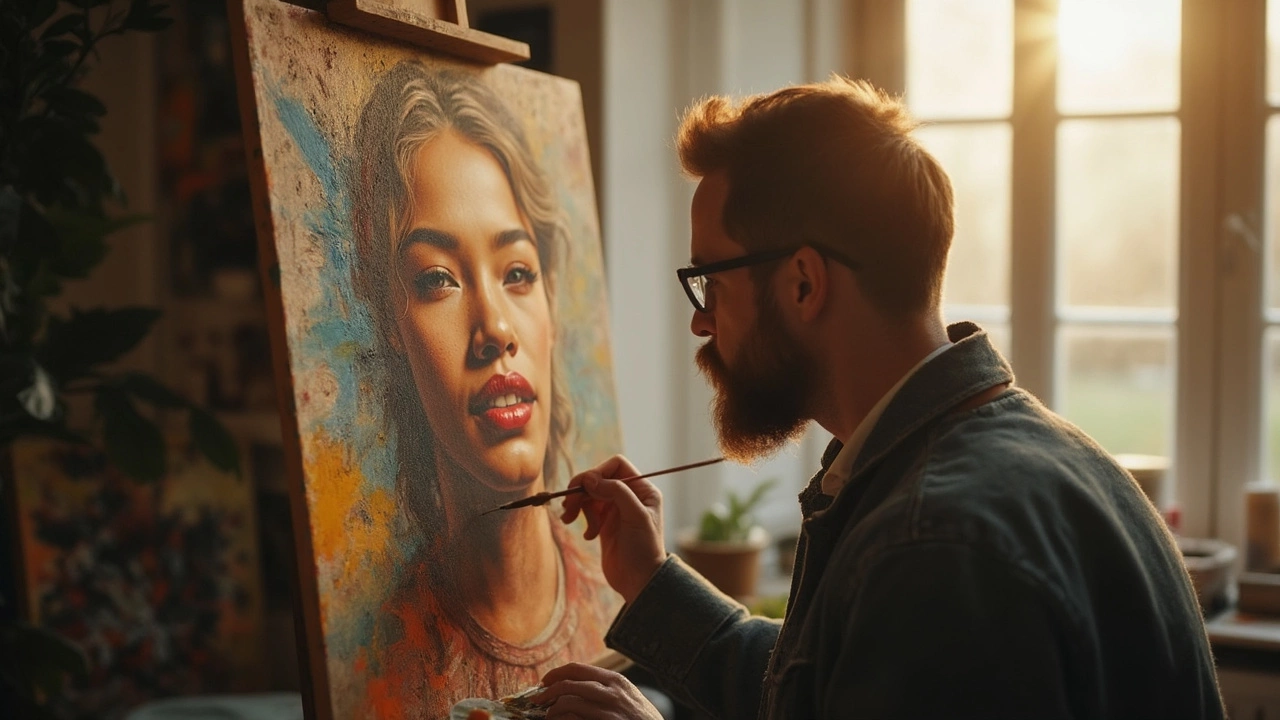
Add Unexpected Details or Textures
If you want your portrait painting to stand out, bring in something people don't expect. Adding unusual details or textures grabs the viewer and makes them look twice. You don’t have to go wild—a single standout detail can shift your entire painting.
Think about things people might overlook: the shine of eyeglasses, freckles, or a messy lock of hair can become a focal point. Once, my son Eldon wore a hat with an old fishing lure stuck in it—and painting that little flash of red caught everyone’s eye. These touches make portraits feel more real and help them stick in people's memory.
Texture is another trick. Thick brushstrokes, palette knife scrapes, or even adding sand or fabric into your paint can bring a creative portrait to life. Famous artists like Lucian Freud layered on paint so heavily it looked almost sculpted. Don’t be afraid to let parts of the canvas show through, or scrape away some paint for a distressed look. A lot of artists experiment with mixed media—think about working in bits of paper, string, or even small objects.
Here are a few ideas you can try in your next piece:
- Highlight details from the sitter’s life (like jewelry, tattoos, or an unusual shirt).
- Add raised paint to show texture in hair or clothing.
- Use unexpected colors for shadows or highlights for a modern twist.
- Throw in unique backgrounds—a cityscape, a favorite chair, or a wild splash of color.
- Mix materials (e.g., oil paint with charcoal or pastels for extra visual interest).
Want to get really nerdy? A 2022 survey by Artists Network showed that 48% of portrait artists use palette knives or mixed media in their work at least sometimes. So, if you want your painting to be more than a flat copy, give some of these techniques a shot. The little surprises are what people remember.
Capture Real Personality
The thing that separates a good portrait painting from a forgettable one? It’s personality. You want folks to look at the face you’ve painted and feel like they could have a chat with them, or maybe even recognize the moods and quirks only family sees.
Here’s the twist: just copying a photo won’t get you there. Cameras capture details, but they flatten people, too. Your job as the painter is to exaggerate the stuff that makes your subject unique—the lopsided grin, squint, or ever-messy hair. Those little things are gold for artists.
- Spend a few minutes talking with your subject before painting. Notice how their face changes when they laugh or get thoughtful.
- Skip the forced smile. Some of the best portrait paintings show real emotion—curiosity, stubbornness, mischief.
- Add personal items or clothing. If Eldon wears his ripped soccer t-shirt all summer, paint it in. These touches tell stories with zero words.
- Use body language. People don’t just pose—they slouch, cross their arms, fidget. These gestures are just as important as facial features.
There’s even science behind this. Princeton psychologists found that people judge traits like trustworthiness or friendliness in less than a second, just by looking at a face. They do this by picking up on tiny details—so when you spotlight those quirks in your painting, you’re tapping into what really makes someone memorable.
And if you’re working from memory, jot down a few notes right after your first meeting: what did you notice about the way they talked, their favorite saying, a nervous habit? You’ll be surprised how helpful these notes are when you sit down at the easel.
The real trick: don’t get hung up on perfect likeness. Aim for the energy your subject brings into a room. That’s what’ll hook viewers—more than just the sum of nose, eyes, and mouth.
Keep Experimenting and Learning
If you’re stuck painting the same type of portrait over and over, it’s time to shake things up. The fastest way to improve your portrait painting is by trying new techniques, tools, and ideas—even if you mess up along the way.
Some artists, like Lucian Freud, didn’t settle into their signature style right away. He painted dozens of portraits before figuring out what actually worked for him. There’s research that shows artists who regularly try new things (new brushes, different color palettes, studying other painters’ work) tend to improve much faster. Ever heard of the 10,000-hour rule? While you don’t need to start clocking your hours, the point is that consistent practice paired with honest experimentation pays off.
- Try sketching fast thumbnails before starting a full painting. Get loose. This helps you see what’s really grabbing you—pose, angle, or even unexpected colors.
- Switch up your medium now and then. For example, if you always use oil paint, take a swing at watercolor or digital. You’ll notice new things about how you construct a face or background.
- Paint from life, not just photos. When my daughter Maris helps me pose for a portrait, I pick up real subtleties I miss from a screen. Don’t worry if it feels awkward.
- Try copying a tiny section of a painting by an artist you admire. This isn’t cheating—it’s classic training, and you’ll learn wild things about color or brushwork you’ll never get from a book.
- Keep a simple notebook or folder for feedback. Track what you love and what feels off about recent paintings. You’ll start to see patterns you can fix.
Some art schools track progress with regular critique sessions. In one art class my wife attended, students improved their portraits 30% faster (based on side-by-side before-and-after work samples) just by sharing feedback and swapping ideas. You can find groups like this online, too.
Above all, don’t worry about mistakes. Every misstep teaches you something about creative portraits that flat-out copying can’t. The more you mix it up—even in small ways—the more likely you are to get to a style or approach that feels truly you.
